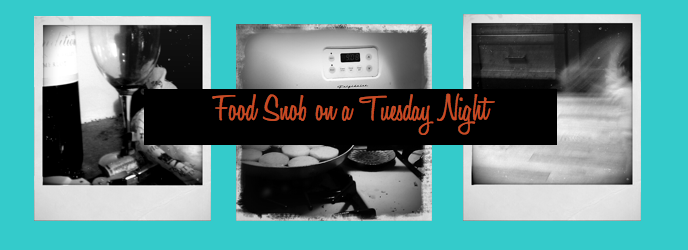This post was supposed to be about wine. In fact, I have told at least three different people that my next post would be about three specific wines. I even dug the empty wine bottles out of the recycling and took pictures of them.
Indstead, I'm going to make a liar out of myself and tell you about the unexpected pantry pasta I made last night, entirely out of pantry items.

Despite my best efforts, summer is escaping.
This dish seems sort of timely, then, on-the-brink Italian peasant sort of food. I prepared this as four distinct elements that I then piled on a plate: pasta, eggplant, tomato-bean sauce and tuna. It was a nice presentation and I think cooking each bit separately, while a little time consuming, ultimately added to the complexity of the dish.
Peasant pasta with tuna
1 can yellow fin tuna
cooked pasta of your choosing-- I used TJ's basil garlic linguine
bread crumbs
Parmesan
For sauce:
olive oil
3 large cloves garlic pressed
5 ripe tomatoes,or about a can and a half canned in a large dice (drain canned ones; leave the seeds in fresh ones)
1 can drained and rinsed cannellini beans
~1/4 balsamic vinegar
~1/4 red wine
salt and pepper
a few good shakes of Aleppo
For eggplant:
one large eggplant, cut in to rounds
olive oil
salt, pepper, Aleppo
Method:
In your favorite saucing pot, cook garlic in a couple table spoons of oil, careful not to let it burn. Add tomatoes and simmer. Add beans and vinegar. Let it cook down a bit and add wine. Season with salt, pepper and allepo. keep over low- medium heat, replenishing liquids with additional splashes of wine and balsamic if it starts to cook off to much. The finished product should be thick like a stew and a deep red.
At the same-ish time, slice the eggplant thinly (1/4" ish). Lay flat on a baking sheet and drizzle with a slightly excessive amount of oil on both sides, then salt, pepper and Aleppo generously. Bake at 300-400 degrees, depending on how much time you have/how hungry you are.
Flip eggplant slices half way though. I left them for about 25 minutes at about 400.
When everything's about ready, drain and press as much water as possible out of the tuna, then sautee it in a small pan with a little olive oil until its starting to look a little crispy.
Serve in an artfully arranged pile in this order:
pasta---a few eggplant slices--bean sauce--tuna flakes--sprinkling of breadcrumbs---sprinkling of cheese.
I recommend smashing it all together a bit before eating, to get the full effect of texture and flavor.


